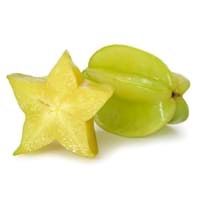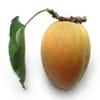Health Benefits
Cancer prevention, Heart care, Improves eye vision, Reduces stress, Regulation of heart rate
Cancer prevention, Heat stroke treatment
General Benefits
Anti oxidant properties, Eye care
Anti oxidant properties, Anti-inflammatory properties, Digestive aid, Maintains healthy cholesterol level, Treatment of sore eyes
Skin Benefits
Heals sunburn, Reduces wrinkles, Treatment of skin diseases
Anti-aging benefits, Heals sunburn, Skin rejuvenation
Hair Benefits
Prevents hair loss
Promotes longer and healthier hair, Protects hair
Allergy Symptoms
Abdominal pains, Anaphylaxis, Breathing difficulty, Diarrhea, Dizziness, Hives, Itching, Lightheadedness, Nasal congestion, Nausea, Swelling of mouth, tongue or lips, Tingling sensation in mouth, Vomiting, Wheezing
NA
Side Effects
Allergic reaction
Nausea, Vomiting
Best Time to Eat
As a snack in the late afternoon, Eat the fresh ones, avoid mixing with any other foods, don't eat after meal., Morning time (before lunch)
As a snack in the late afternoon, Eat the fresh ones, avoid mixing with any other foods, don't eat after meal., Strictly avoid empty stomach
Vitamin B5 (Pantothenic Acid)
Vitamin C (Ascorbic Acid)
Vitamin K (Phyllochinone)
Phytosterol
Not Available
Calories in Fresh Fruit with Peel
Calories in Fresh Fruit without Peel
Not Available
Not Available
Calories in Frozen Form
Not Available
Calories in Canned Form
Not Available
Calories in Jam
Not Available
Calories in Pie
Not Available
Type
Tree fruit
Tree fruit
Season
Autumn, Summer
Autumn, Spring, Summer
Varieties
Reliance, Sweet Scarlet, Spring Snow, Sugar May, Santa Rosa, Red Beauty, Glowhaven, Cresthaven and Redhaven Peaches
King, Bell, Sri Kembangan, Arkin and Fwang Tung
Color
Pink, Red, White, Yellow, Yellowish-orange
Golden yellow, Green
Inside Color
Yellow
Yellowish Green
Shape
Round
Oval and Star(Cross section)
Taste
Sweet
Crisp, Juicy, Sweet
Grows on
Trees
Not Available
Soil Type
Sandy loam, Well-drained
Loam, Well-drained
Climatic Conditions
Cold, Warm
Moist, Warm to hot climate
Facts about
- In china, peaches are considered as a symbol of good luck.
- From 1982, august is National peach month in USA.
- In roman times, Peaches were also called as Persian apples, as people assumed that they originated from Persia.
- When carambola is cut horizontally, it forms a star.
- It is believed that carambola helps to cure hangover.
- Entire carambola is edible, including its skin.
- 2 varieties of carambola are cultivated: tart & sweet.
Top Producer
China
Taiwan
Other Countries
Greece, Italy, Spain, United States of America
Australia, Guyana, India, Israel, Malaysia, Philippines, United States of America
Top Importer
Germany
Europe
Top Exporter
Spain
Malaysia
Botanical Name
Prunus persica
Averrhoa carambola
Synonym
Not Available
Not Available
Subkingdom
Tracheobionta
Tracheobionta
Division
Magnoliophyta
Magnoliophyta
Class
Magnoliopsida
Magnoliopsida
Family
Rosaceae
Oxalidaceae
Species
P. persica
A. carambola
Generic Group
Rose
Not Available
Difference Between Peach and Carambola
We might think that Peach and Carambola are similar with respect to nutritional value and health benefits. But the nutrient content of both fruits is different. Peach and Carambola Facts such as their taste, shape, color, and size are also distinct. The difference between Peach and Carambola is explained here.
The amount of calories in 100 gm of fresh Peach and Carambola with peel is 39.00 kcal and 31.00 kcal and the amount of calories without peel is Not Available and Not Available respectively. Thus, Peach and Carambola belong to Low Calorie Fruits and Low Calorie Fruits category.These fruits might or might not differ with respect to their scientific classification. The order of Peach and Carambola is Rosales and Oxalidales respectively. Peach belongs to Rosaceae family and Carambola belongs to Oxalidaceae family. Peach belongs to Prunus genus of P. persica species and Carambola belongs to Averrhoa genus of A. carambola species. Beings plants, both fruits belong to Plantae Kingdom.









